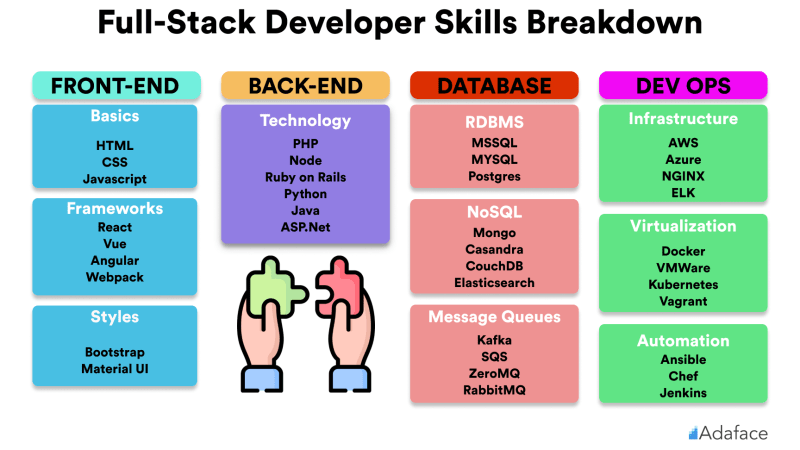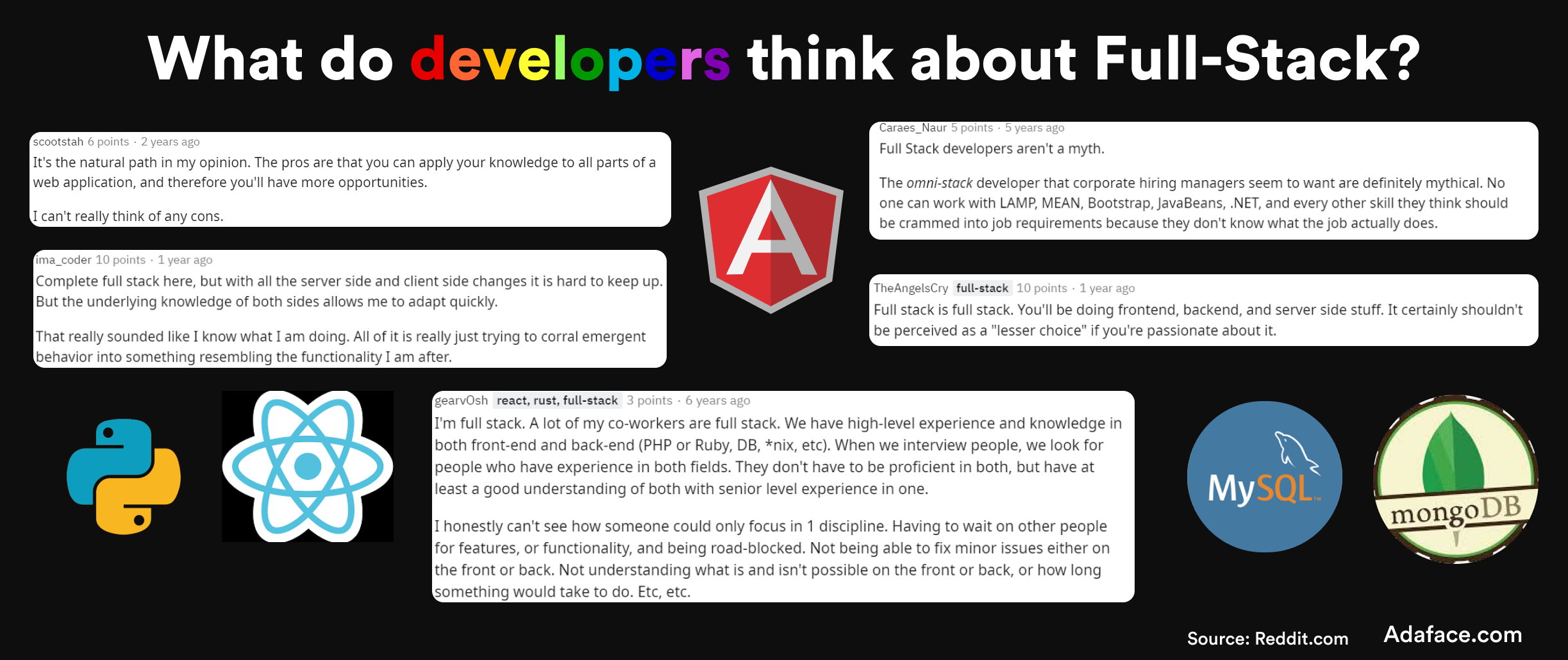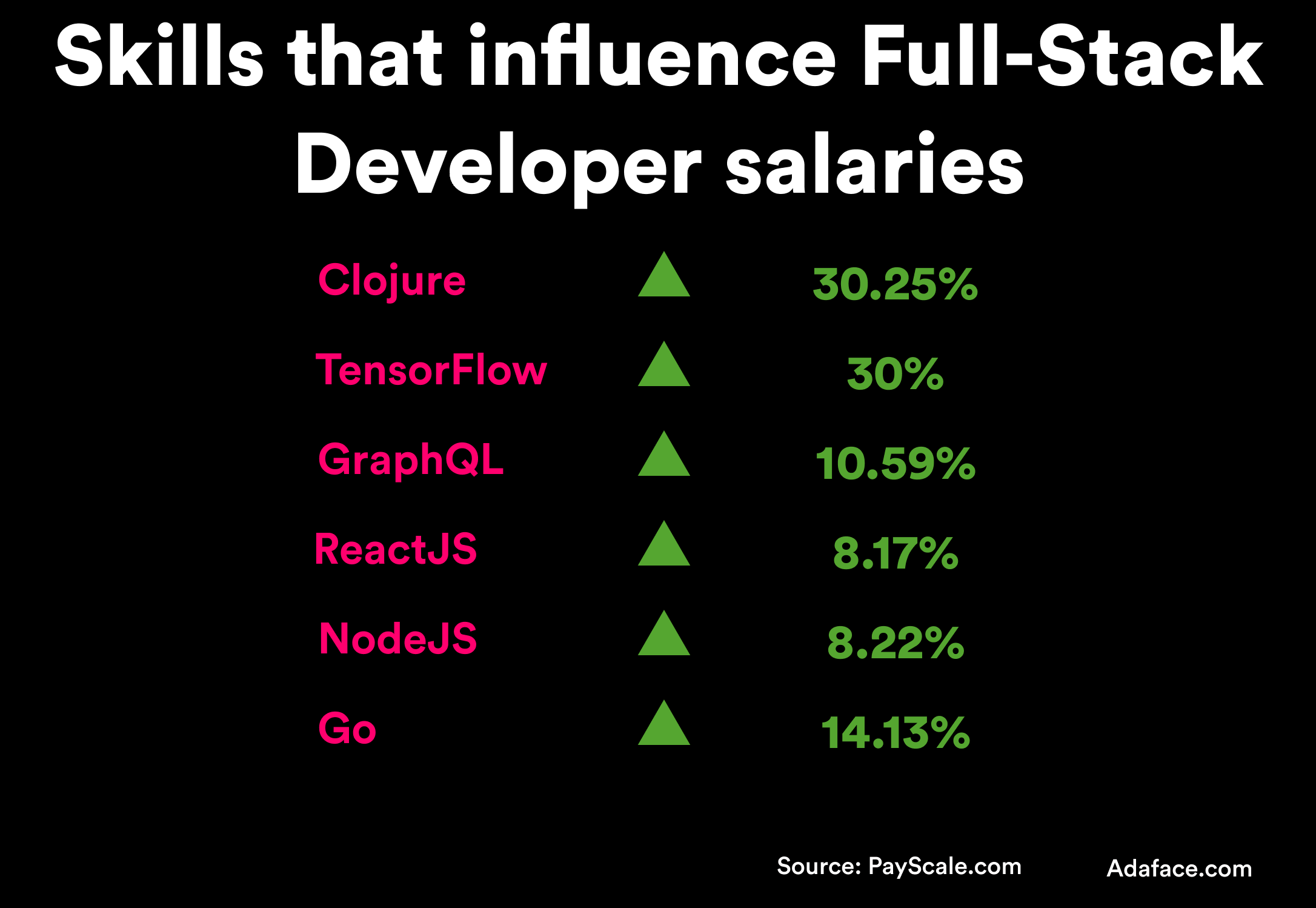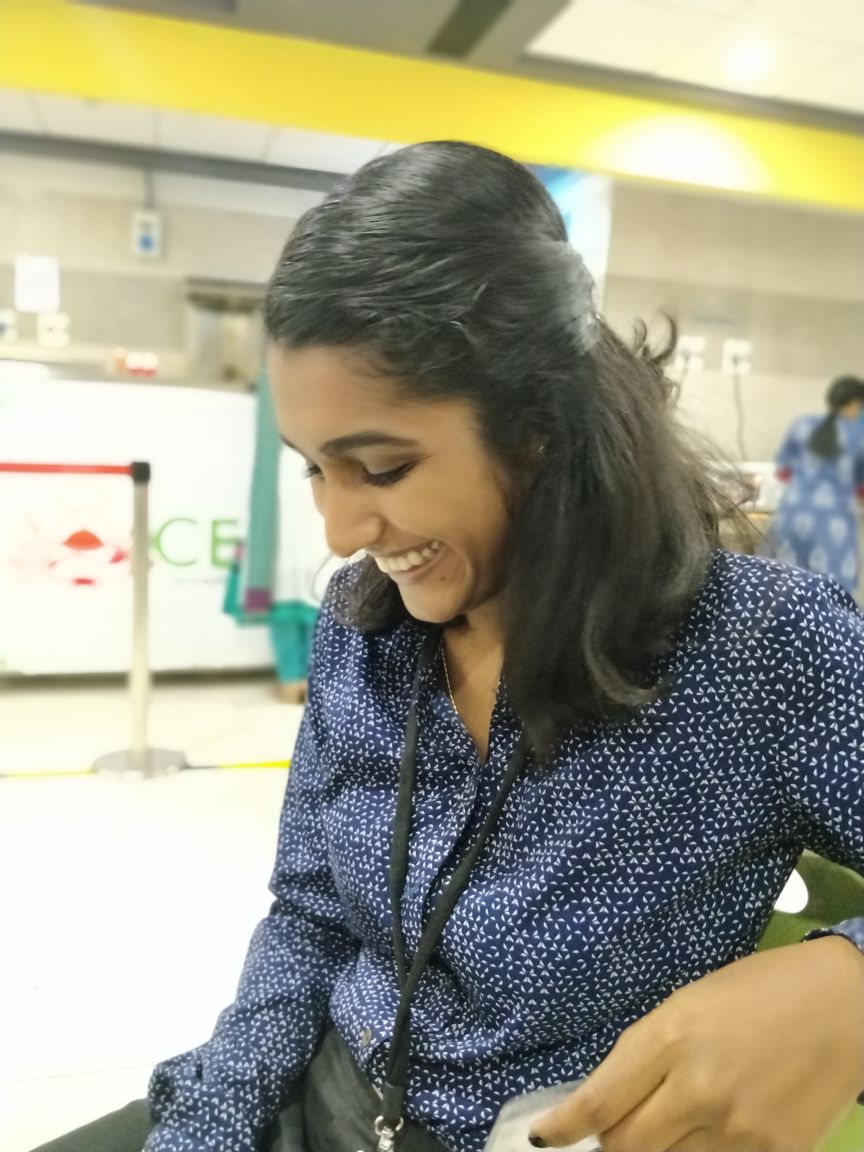
The demand for full-stack developers is steadily rising and organizations require talented professionals who can work with both front-end as well as backend technologies. Because of this reason, there is an increase in full stack developer salaries around the world.
Having more people working on one project for different technologies results in more time spent in work allocation and communication, which proves costly for companies. Having a full-stack developer for a project decreases the number of people working under a project and ultimately the cost of the project.
This article attempts to shed light on what the global market expects and offers Full-stack developers.
What's included:
Who are Full-stack Developers and what do they do?
Full-stack developers are experts who are proficient or at least familiar with both client-side and server-side programming.
They perform the roles of both front-end and back-end developers along with DevOps.
A full-stack developer is required to know how to program a browser, server, and database for the entire project. Some of the commonly used languages, frameworks, and tools are shown in the image below.
Their responsibilities include:
- Server-side management, which includes maintaining remote connections, managing users and groups, firewalls and permissions, software installations, and updates.
- Cloud computing, which includes deploying and managing hosted environments.
- Database management, including relational databases such as MySQL or MSSQL and NoSQL databases such as MongoDB.
- Back end processes, such as web servers, API design, etc.
- Front end processes are written using tools such as JavaScript and its frameworks.
- Mobile application development, if the same project needs to be used on an Android or Apple device as a full-fledged application.
Types of Full-stack developers
Full-stack developers aren't necessarily restricted to the type of languages used. Hence, based on the type of technology/frameworks used, they can be broadly categorized as follows.
MEAN Stack Developer
A MEAN Stack Developer uses MEAN Stack, which is a popular full-stack framework, consisting of MongoDB, Express.js, AngularJS, and NodeJS. AngularJS is used for front-end framework while NodeJS is used for server-side programming along with Express.js. MongoDB, which is a non-relational, NoSQL database is used for the storage of data.
MERN Stack Developer
A MERN Stack Developer uses MERN Stack, which consists of MongoDB, Express.js, ReactJS, and NodeJS. Unlike MEAN Stack, ReactJS is used for front-end development in a MERN Stack.

Django Stack Developer
A Django Stack Developer uses Python Stack, which consists of Django, MySQL, HTML, CSS, and Bootstrap. Django is a free and open-source Python framework that is used for server-side web development.
Ruby on Rails Full-Stack Developer
Ruby on Rails, or just Rails, is a server-side web application framework written in the language, Ruby. A Ruby on Rails Full-Stack Developer uses a combination of HTML, CSS and JavaScript frameworks for front-end programming, MySQL or MongoDB for data storage and management, and Rails for backend development.
LAMP Stack Developer
LAMP Stack uses the Linux operating system, the Apache HTTP Server, the MySQL database, and the PHP programming language to create web applications. For years it has been an effective solution to develop enterprise-level web applications with enhanced customization and flexibility.
It is very common to substitute other programming languages like Python, Perl, and even Ruby for PHP in LAMP Stack.
LEMP Stack Developer
The LEMP Stack configuration is very similar to LAMP Stack. It only differs in the fact that LEMP Stack replaces the Apache web-server component with Nginx to increase the ability of the server to scale in response to demand.
Full-Stack Developer Responsibilities
- Design and development of the client-side and server-side architecture of applications.
- Create and maintain effective APIs.
- Design, develop, and manage databases.
- Unit-testing the code for edge cases, usability, responsiveness, and efficiency.
- Implementing security measures to safeguard data and privacy.
- Collaborating with cross-functional teams such as the Design and Testing teams to define, design, and ship new features.
- Releasing stable application updates, which includes bug fixes, additional features, improved performance, and efficiency.
- Writing and maintaining technical documentation.
Full-Stack Developer Required Skills
- Programming skills: Excellent knowledge or proficiency in front-end programming languages (e.g. HTML/ CSS, JavaScript, XML, jQuery), back-end programming languages (e.g. C#, Java, Python). Familiarity with JavaScript frameworks and libraries.
- Database Management and DevOps: Knowledge of relational (e.g. MySQL) and non-relational (e.g. MongoDB) databases. Familiarity with web servers such as Apache.
- Security: Knowledge of security concerns and best practices involved.
- Design skills: Familiarity with UI/UX design.
- Analytical and Critical thinking. Find analytical and objective solutions to business problems. Attention for detail.
- Communication skills: Communicating with the design team and testing team to understand and implement user requirements in the existing or new system.
- People skills: Team player, organizational skills, and good time-management skills.
Full-Stack Developer Salary
The highest average annual salaries for full-stack web developers are seen in countries such as the United States, Australia, Canada, Denmark, and Switzerland and the lowest average annual salaries are present in countries such as Egypt, India, and Romania.
The average Full-stack developer salary in India is around ₹589,578 or $7800, and that in the United States is around $86,121.
Factors Influencing Full-Stack Developer Salary
Some of the primary factors affecting the salary of full-stack developers are listed below:
- Skills
- Location
To understand how full-stack developer salary can change based on the above-said factors, we are going to consider data from India and the US.
Full-Stack Developer Salary based on Skillset
According to PayScale and Indeed, the best-paid skills for full-stack developers are proficiency or familiarity with Clojure, Go, Spark, GraphQL, and Tensorflow among others.

Full-Stack Developer Salary based on Location
Location plays an important factor that influences Full-stack developer salaries in countries like India and the US. In India, according to PayScale, Full-Stack developers based in Bangalore earn an average of 27% more than the national average. The lowest salary can be found in Pune (11% less). In the US, according to Indeed, Full-stack developers based in the states of California and North Dakota earn an average of 14% more than the national average salary. Full-stack developer salary is higher than national average salaries in New York (7% more) and Washington (6% more). Full-stack developer salary is the lowest in Mississippi (38% less).
🌟 Extra Resources 🌟
💡 Pro-Tip: Use Front-End Online Test to assess the basic front-end development skills of a candidate.
💡 Pro-Tip: Use Backend Online Test to assess the basic back-end development skills of a candidate.
🔥 Hot-Tip: Use our Full-Stack Developer Job Description for your hiring needs.
🔥 Hot-Tip: Try our sample JavaScript questions to check your knowledge.

Keerthi is a Content Marketing Strategist at Adaface.
Spending too much time screening candidates?
We make it easy for you to find the best candidates in your pipeline-
with a 40 min skills test.


